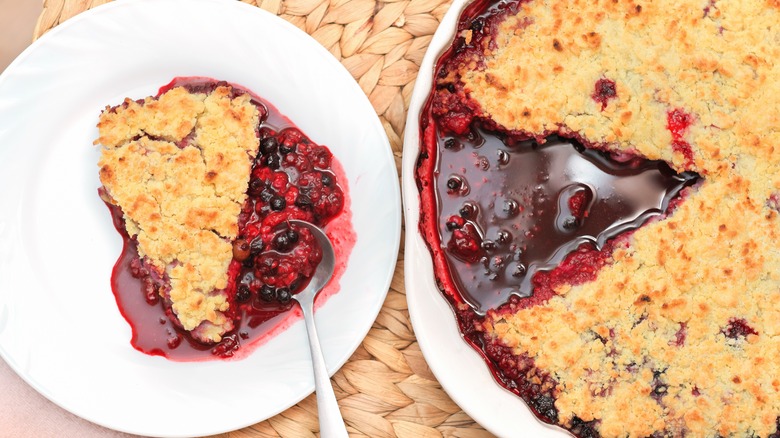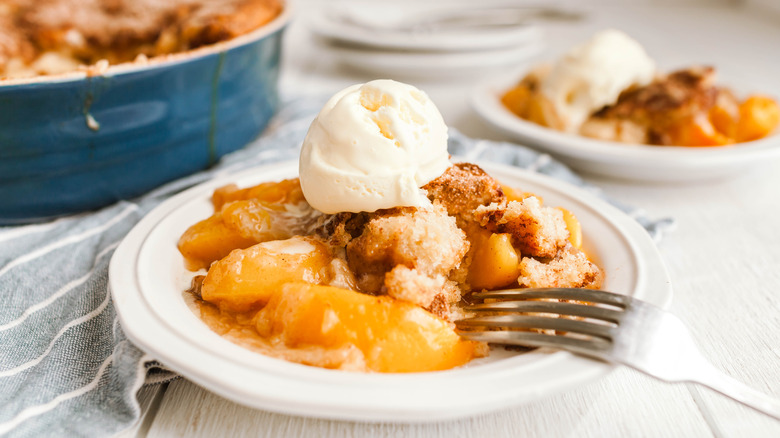The True Colonial Origin Of Cobbler In The United States
If you like alliteration, you're going to love this short history of cobbler. Not only are we going to have to differentiate the dessert cobbler from the "c" words it resembles — which include cobbler's alternative definitions, like a shoemaker or a type of cocktail — but also the host of variations and offshoots the dish has inspired over the course of its lengthy and colorful history (most notably, as crisps and crumbles).
Cobbler, in the food sense, dates back to the American Colonial period, notes What's America Cooking, and originated when colonists were forced to modify traditional European recipes due to a lack of traditional ingredients. Early English and Dutch settlers used the ingredients and cooking methods at hand, per Culture Trip, integrating regional fruits and berries, and cooking them with biscuit dough over open fires in Dutch ovens.
Cobbler was a dietary staple for early American settlers, and was just as likely to be served for breakfast or dinner as it was for dessert. In fact, according to Cowboys and Chuckwagon Cooking, cobbler wasn't pigeon-holed as a dessert food until the latter part of the 19th century. By then, cobblers had accompanied pioneering settlers West, becoming a chuckwagon favorite, and inspiring a multitude of regional variations.
Regional variations and the evolution of cobbler
The region most associated with cobbler is the American South, where the variation of choice remains peach cobbler (preferably with a pairing of vanilla ice cream). Per Culture Trip, peach cobbler is thought to have originated with the recipe common to all early cobblers: essentially, fruit plus dough plus fire. According to Pear Tree Kitchen, the earliest known cobbler recipe is found in a book called "What Mrs. Fisher Knows About Old Southern Cooking," published in 1881. Mrs. Fisher (an escaped slave, per Bon Appétit) was partial to pastry dough for her peach cobbler.
This issue of doughs and batters is still discussed when it comes to another famous regional variation called sonker. Sonkers are made in North Carolina, notes The New York Times (as opposed to New England variations like Brown Betty or pan dowdy), and typically include a "dip" that blends flour, milk and sugar, although fillings are less agreed upon. Some, particularly those in the African American community, like sweet potatoes, while other North Carolinians like juicy fruit such as wild blackberries.
Other variations, meanwhile, are rather more national than regional in character. Per What's Cooking America, that's the case with the crumble and crisp. Those in the U.K. favor the former term (crumbles became popular during the Second World War, the Canton Repository reports), while Americans prefer the latter. In appearance, though, the two are hard to tell apart, as both are known for their crumbly toppings.

